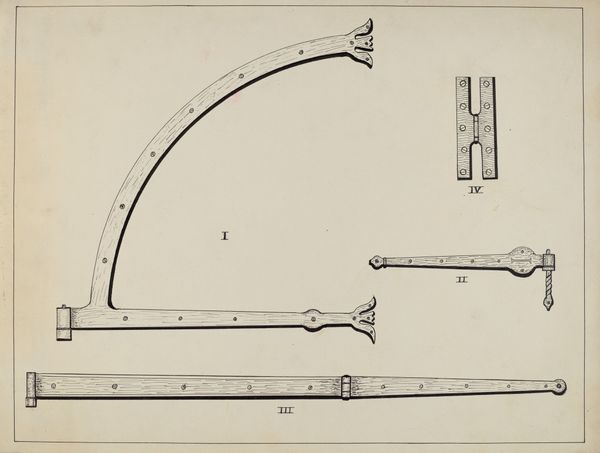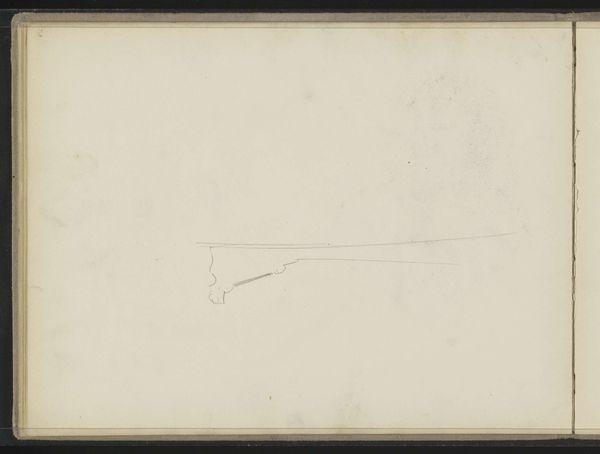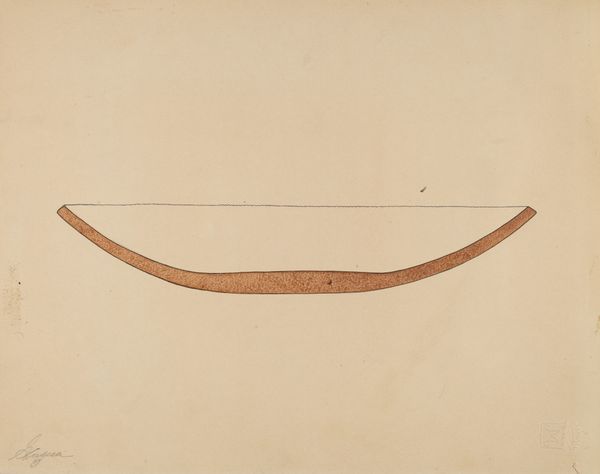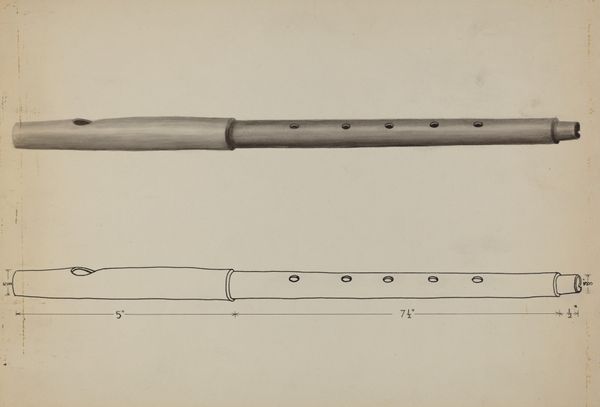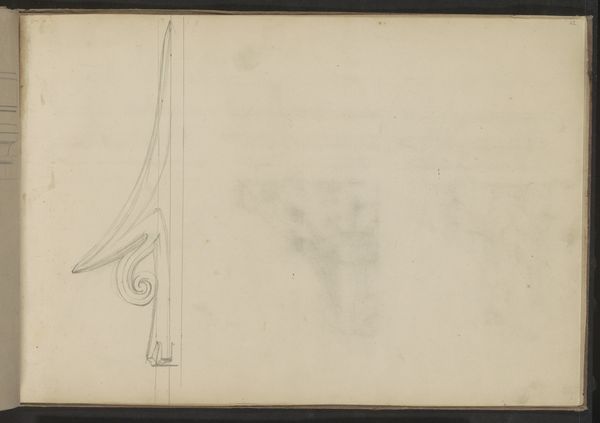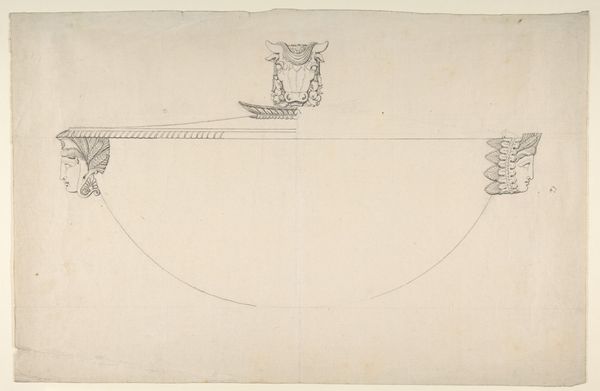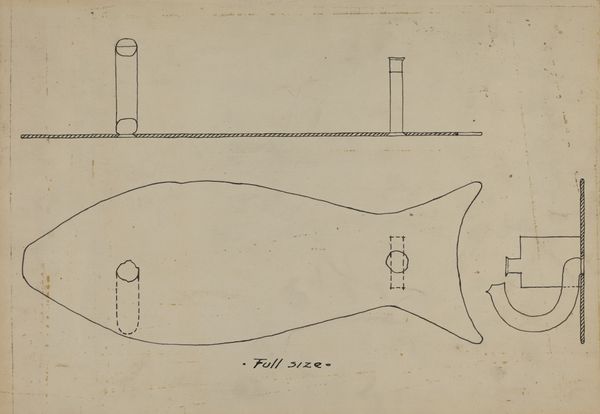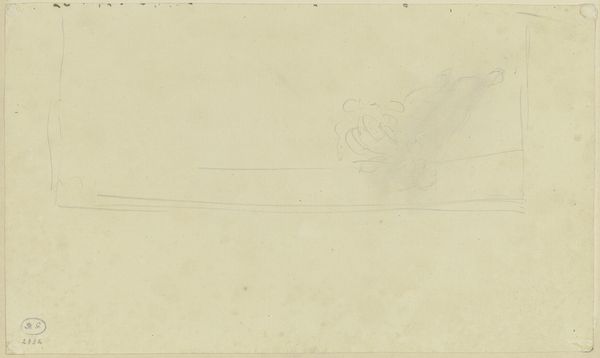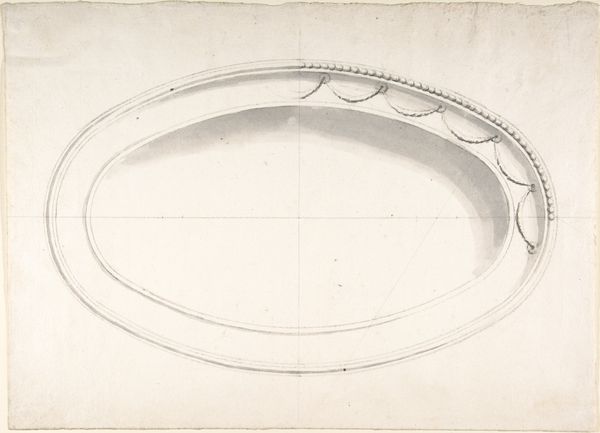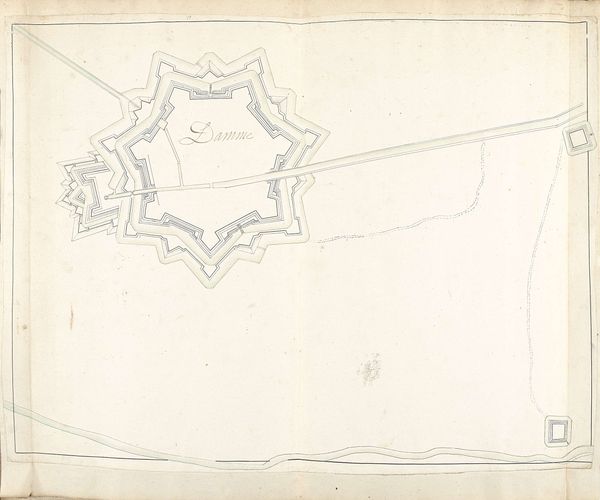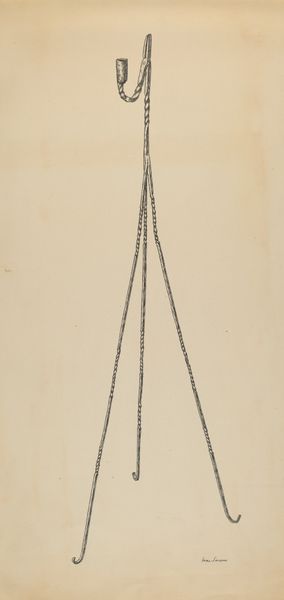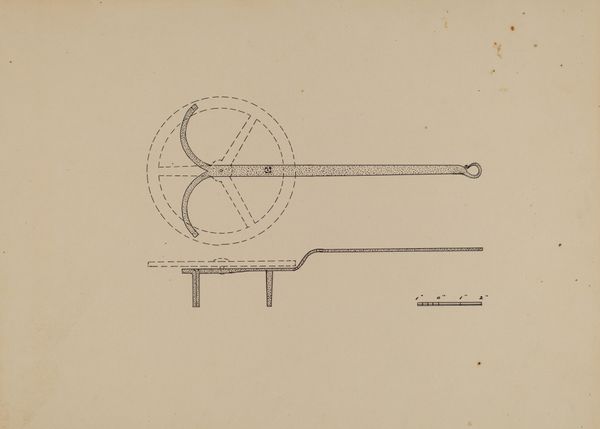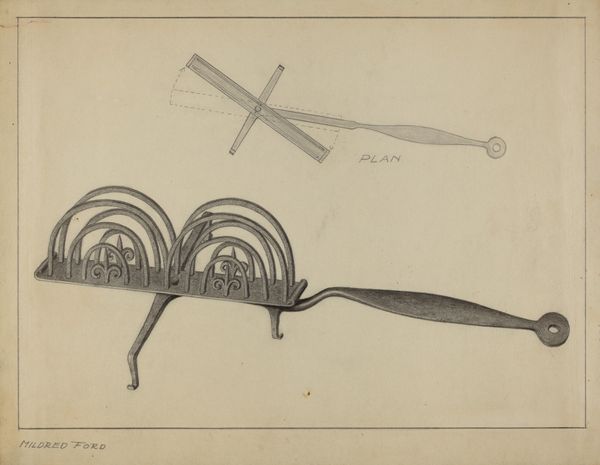
drawing, pencil, graphite
#
pencil drawn
#
drawing
#
geometric
#
pencil
#
graphite
Dimensions: overall: 27.6 x 35.6 cm (10 7/8 x 14 in.) Original IAD Object: 14" in diameter
Copyright: National Gallery of Art: CC0 1.0
Curator: Let's discuss this simple yet striking work titled "Plate" rendered by Giacinto Capelli between 1935 and 1942 using pencil or graphite. It’s essentially a drawing, a utilitarian object presented with sparse geometric lines. Editor: My first thought is, 'what emptiness!' A line drawing, simple and plain. It gives an oddly suspended feeling because its emptiness calls so much attention to what is not being depicted, it’s intriguing. Curator: I find the simplicity deliberate. It highlights the aesthetics of everyday functional items in a period heavily influenced by rationalism. It calls to question the beauty found within everyday simplicity. Editor: But who determines what is simple and commonplace? Is this “Plate” from the 30’s not hinting toward something deeper. For the oppressed who are often relegated to just functional, might a plate represent nourishment and sustenance, perhaps even lack thereof. The period it was made in reflects that for sure. Curator: Interesting angle. Thinking historically, there was, particularly in Europe at that time, a cultural movement focusing on elevating everyday designs, bringing industrial products into the sphere of art. Editor: Exactly, so we have to consider this in terms of labour, power and politics. Is there an intentional choice from Capelli to use the image of something mundane, like a plate? Could that be considered a statement in a world often concerned with over-produced objects or statements about power? Curator: You are nudging me to think how museums traditionally validate particular kinds of objects. Here a simple dish drawing joins them! Editor: That's exactly what art should encourage: conversation, re-evaluation, re-imagining. Especially, if it asks us to contemplate the quiet struggles within seemingly commonplace scenarios. Curator: Well, you have certainly provided an alternative way of viewing this object! I appreciate your thoughts about this simple image's complexity. Editor: I appreciate the opportunity. I am glad we both looked past the plate to something far more palatable.
Comments
No comments
Be the first to comment and join the conversation on the ultimate creative platform.
